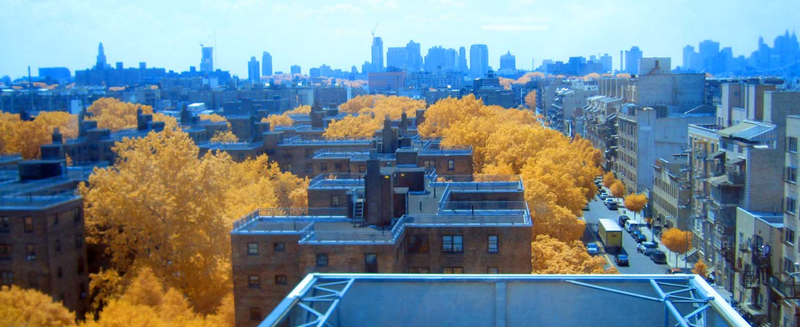
Infragram
The Infragram is the name of the infrared/visible light camera which Public Lab is offering in a Kickstarter in May 2013. (link coming soon)
Why do we do it?
The study of Earth's environment from space got its start in 1972 when the first Landsat satellite was launched. The multispectral scanner it carried, like the scanners on all subsequent Landsat satellites, recorded images with both visible and near infrared light. Remote sensing scientists quickly learned that by combining visible and infrared data, they could reveal critical information about the health of vegetation. For example, the normalized difference vegetation index (NDVI) highlights the difference between the red and infrared wavelengths that are reflected from vegetation. Because red light is used by plants for photosynthesis but infrared light is not, NDVI allows scientists to estimate the amount of healthy foliage in every satellite image. Thousands of scientists, including landscape ecologists, global change biologists, and habitat specialists have relied on these valuable satellite-based NDVI images for decades.
The goal of the Infragram project is to bring the power of NDVI and other infrared vegetation images back to earth where everyone can now take close-up images of plants or landscapes and instantly learn about their health and vigor.

Figure above: Normal color photo (top) and normalized difference vegetation index (NDVI) image. NDVI image was derived from two color channels in a single photo taken with a camera modified with a special infrared filter. Note that tree trunks, brown grass, and rocks have very low NDVI values because they are not photosynthetic. Healthy plants typically have NDVI values between 0.1 and 0.9.
What is it? (Quick Science)


- NDVI
- Image

How do we do it? (prototypes, links)
